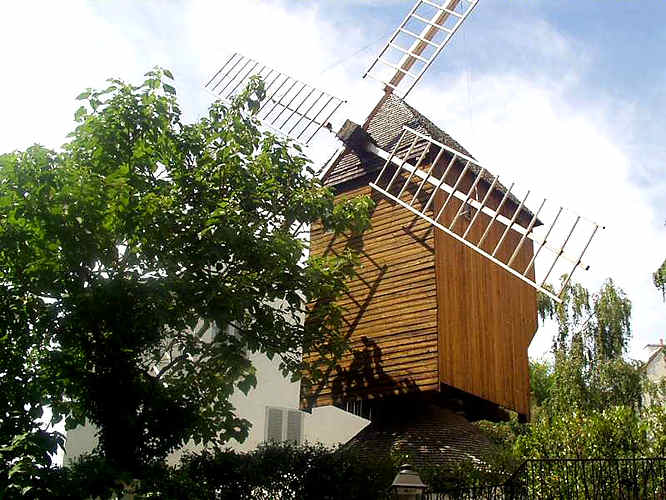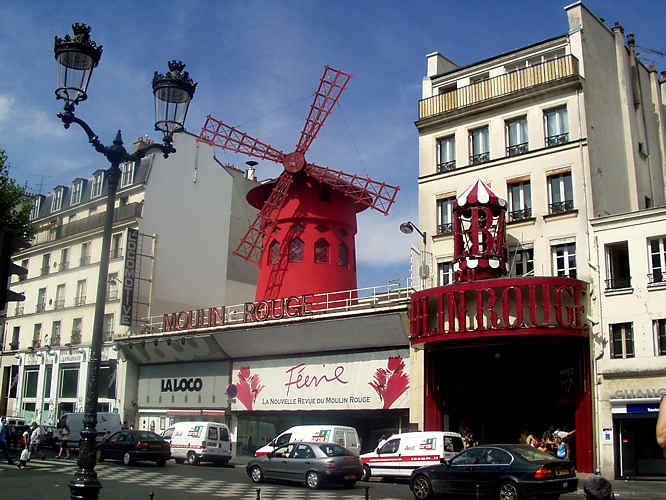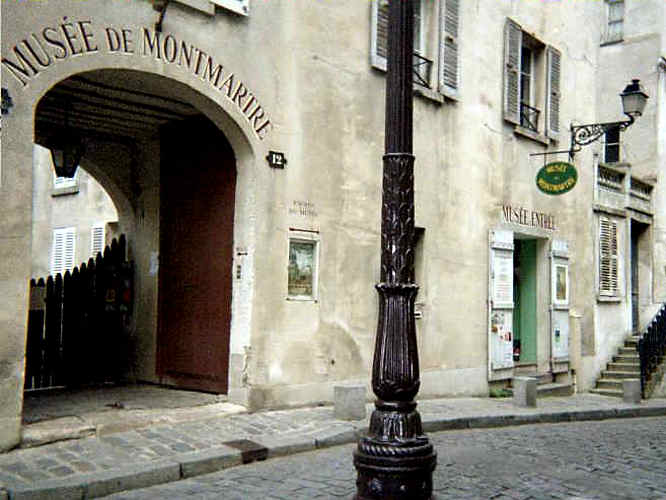The Paris Windmills of Montmartre
The French word for Mill is Moulin. Fifteen working windmills used to adorn the hill of Montmartre but today only two remain. For a long time Montmartre was a hill top country village of agricultural workers peasants, artisans and millers.

At its centre was the old Abbey. They were used to grind wheat, press grapes and crush materials needed by local factories. The only two remaining windmills today are the Le Moulin Radet and the le Moulin Blute-Fin.
The windmill Blute-fin was built in 1622 and often repaired. The name comes from the French verb 'bluter' which means to sift flour. In 1814, during the siege of Paris one of the owners strongly defended the windmill against Russian Cossacks. They killed him and nailed him to the sails of the windmill.
In 1870, the owner Charles-Nicolas Debray, added a guinguette, a popular style of drinking establishments with a dancing room. It was called 'Moulin de la Galette'. Guinguettes outside the city limits of Paris were popular because they offered public dancing and cheap alcohol which was not available inside the limits.
It was later used as a music-hall, French public TV radio and television studios. It was closed in 1974 and is now private property. In 1717 the 'Radet' windmill was built.. It was used as a guinguette on Sundays and public holidays in the 19th century. In 1924, its owner moved the windmill to the corner of Rue Girardon and Rue Lepic. It was restored in 1978, but is not running. Renoir and other artists painted scenes from the Guinguette

Le Moulin Rouge
Le Moulin Rouge, (The red windmill) is at the bottom of the Montmartre hill. It is a large night club with a large imitation red windmill built on the top. It is near the corner of Boulevard Clichy with Rue Lepic.
I was a little disappointed the first time I saw this club famous for scantly clad cheeky cancan girls but it is one of those places you have to say you have seen. There are two shows a night, You pay to see a big production choreographed dance show with a few comedians, jugglers, and magicians.
If you want to spend more you can have dinner there. It is very expensive. The Metro station is near by. Take it to your next location in Paris. I would suggest going to Notre Dame Cathedral.

The Montmartre Museum
The Museum of Montmartre is just above the vineyard, at 12 rue Cortot. It occupies one of the oldest houses in Montmartre, dating from the 17th century. In 1680 it was the residence of Roze de Rosimond, an actress in the Moliere troupe. From the booth where you buy your ticket, you cross a small garden to access the actual museum, which is in an old house at the back.
It overlooks the vineyard. It is delightful. The Museum is filled with paintings and posters from the heyday of Montmartre. There are old photos of famous cancan dancers. From the windows you can use your camera to get beautiful views of the vineyard.
Renoir painted his famous work of art 'Le Bal du Moulin de la Galette' in 1876 in this building. The picture is now on display in the Musee d'Orsay.
Travel books

